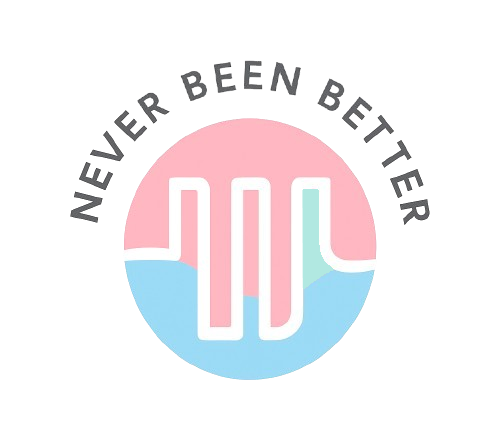I stand in the store, looking at my list, realizing that I completely forgot to plan dinner for tonight. Hmm, what should I do? Salmon is expensive, even on sale. You know what? I’ll go for my go-to meal: frozen pizza. Wait, but I’m already having pizza tomorrow. No, then I really can’t have pizza today as well.
This is a thought process I wouldn’t have believed possible a few years ago. Pizza is my favorite food—I could eat it every day. Yet, my mind has now learned that I want to make a different choice. I no longer have to fight myself not to buy pizza. It has become an automatic decision. Tomorrow’s pizza means no pizza today.
This is just one personal example, and maybe you don’t even like pizza. Building routines, however, goes far beyond food choices. It involves all the conscious and unconscious decisions you make regarding self-care, setting boundaries, and doing the things you truly want. That’s why I believe everyone can benefit from learning more about routine building.
Routines are at the core of both good and bad habits that you adopt or want to adopt. Being in control of your routines creates an environment where you feel good about the things you do. It starts with adjusting thought patterns, which then translate into actions. However, many choices are made unconsciously, and you often only realize afterward that you would have preferred to have acted differently. This leads to making choices that don’t align with what you actually want. This creates an imbalance between what you do and what you wish you were doing, leading to exhaustion and making it even harder to make the ‘right’ choices. By breaking routines that no longer serve you and building new ones, you create more balance. And balance brings peace and satisfaction.
With this blog, I aim to describe in a simple way how I build my routines until they become deeply ingrained in my system. I want to stay away from listing specific ‘rules’ because I believe it’s much harder to follow someone else’s patterns, than your own. The idea is that these general steps can be applied to any situation. Maybe something has already come to mind for you. Think about it, and keep it in mind as you go through the following four phases (because everything is a phase, right?).
PHASE ONE: SMALL STEPS
Oh man, we live in a time where we want results—and we want them now. We are used to the fast pace of life. However, building routines requires precision and patience. The steps you take are small ones that help you reach a bigger goal.
Often, the goal is only achievable over a long period. We tend to think that being quick makes things easier, but this often leads to frustration and giving up. To make conscious choices repeatedly until they become a routine—and to sustain this—you need to take it slow. And honestly, I even think it should require a bit of effort. This creates a positive feedback loop (more on this in phase four).
A small step is not: ‘I never work out, I need to be healthier, so from now on, I’ll go to the gym four times a week and only eat vegetables.’ A small step is: ‘Let’s make sure I step into the gym at least once this week.’ Right now, we’re not looking at the result of the goal; we’re focusing on the result of the new routine. If you managed to go to the gym this week, you’ve done well. On to the next step.
PHASE TWO: SIMPLE ROUTINES
Because we want to sustain something for a long time, the routines we create must be simple. If they are too complicated, we set ourselves up for failure, leading to negativity. If they require too much effort to execute properly, they drain too much energy.
For example, if you want to become a better listener, you might think: ‘I will listen carefully and, at just the right moment, give a perfect response that truly adds value to what the other person just told me.’ But if you have to consciously think about all of this to make it a routine, you’re not actually listening—you’re busy thinking about what you need to do. So instead, your routine should be a short, simple sentence: ‘I will listen better.’ ‘I will stop buying candy.’ ‘I will go to bed at 10 PM.’
Keeping routines simple leaves less room for internal debate. ‘Maybe just a little more of this and a little less of that, and then I’m still sort of following my routine’. We will continue to test ourselves until something truly becomes a routine. Also, it is good to occasionally reflect on whether a new routine is having the desired effect. But not in the moment itself. When you need to make a choice, your simple routine is there to tell you exactly what action to take. Follow it until it becomes second nature.
PHASE THREE: KEEP REPEATING
There are always things we think about doing differently. If a certain thought frequently comes to mind, it’s likely a core goal. ‘I want to live healthier.’ Every time you think that, consider what small, simple step you can take toward that goal. Think about what actions you can turn into a routine. You’ll find that as you become more aware of these thoughts, the right actions will start to surface naturally.
In the beginning, you’ll forget about your new routine often. That’s okay. Every time it happens and you realize it afterward, remind yourself that it’s good you thought about it, even if it was too late this time. By continuously repeating this process, the moment you remember will gradually shift forward. This is the power of repetition and turning it into something positive.
PHASE FOUR: POSITIVITY
This is the most important part of the entire routine-building experience. Don’t see yourself as a failure. Everyone is doing their best. There are always reasons why something works or doesn’t work. It doesn’t have to be perfect. In fact, you learn more when you put in effort. If something comes easily, the positive feedback you receive is much weaker than when you’ve worked hard for it. That’s when you feel truly proud. So, it’s completely okay if things don’t always go smoothly. Focus on the process, see the bigger picture, and be kind to yourself. Make it a ‘feel good experience’. In the end, you put in the work to make you feel better, right?
Additionally, focus on what you want to do rather than what you shouldn’t do. If you want to eat less candy, for example, focus on eating as many vegetables and fruits as possible. That way, you’ll have less time and less appetite for candy. This prevents you from constantly battling yourself.
No one is at 100% every day, and expecting that is unrealistic—it only leads to disappointment. Everything you do accomplish is something good. Build from there.
LESS IS MORE
This entire process should be repeated step by step until something becomes a routine. Be patient and, most importantly, focus on one step at a time. Once something is truly ingrained, you’ll have more mental space for the next step. The goal is slow but achievable progress. Trying to change too much at once requires too much cognitive effort. Your body and mind need time to adjust to the new situation. Once you notice that something is firmly in place, you can start again with phase one and keep building.
When routines start to clash or become too complicated to follow, take a step back. The goal isn’t to create a tangled web of rules. Make sure there’s also room to simply be. Remember, building routines is meant to serve a positive purpose.
Ultimately, you will experience more happiness because you’ll be doing the things you truly want. Bringing your mind and body into greater balance, that is the ultimate goal.
TIP: Try linking a new routine to one you already have. If you want to start something new, do it right after work or after brushing your teeth, for example. By attaching it to an existing habit, the trigger to remember it will naturally come back each time.
Discover more from Never been better
Subscribe to get the latest posts sent to your email.




Be the first to share your story!